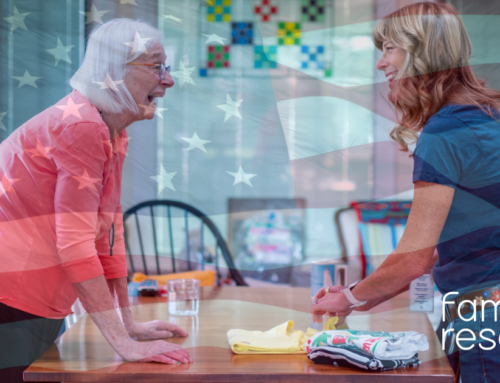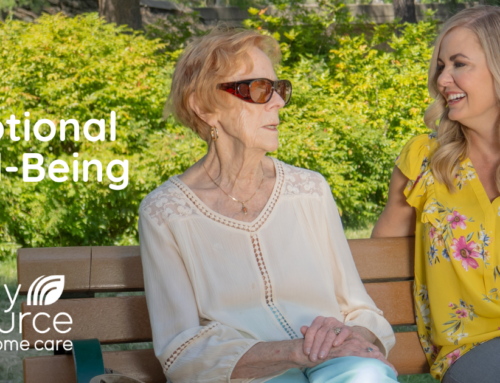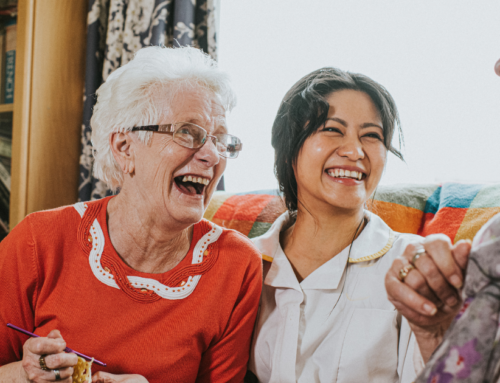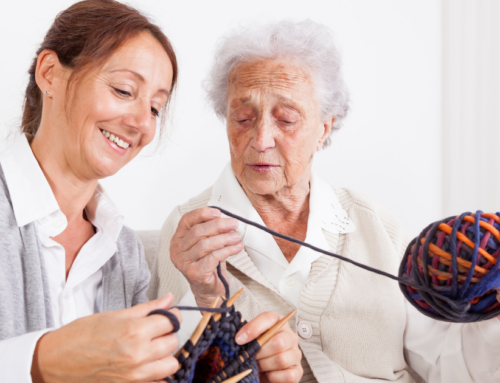You’re following the care plan and doing everything right; your client’s laundry is done, the house is clean, lunch is made, and the weather is perfect for a walk outdoors. But your client is still in bed, refusing to get up and let you give her a bath. This is something all caregivers experience and it is frustrating every time. What do you do when your client won’t: take a bath, eat, drink more water, go for a walk or cooperate with any number of other reasonable requests you may have?
It is so important that this not become a struggle of wills. The activity being requested might be in the care plan but that does not mean tasks must be accomplished in a specific order or that the task is more important than your client’s emotional well-being. First, find out what it is your client is reluctant to do. Maybe he/she is refusing to take a bath because they don’t like feeling cold. Once you understand the feelings behind their actions, you may be able to decrease their fear, discomfort or anxiety. If simple reassurance is not helping, it is perfectly okay to change the plan and start small with something your client can agree to. Perhaps they will get out of bed and have lunch, postponing the bath until later. Once they are up and eating, you can talk about the benefits of bathing and explain exactly what you will do to maximize their comfort.
Since every client is different, it is important to tailor your response to them specifically. For a confused client, do not ask if they want to do something, but instead gently tell them it is time to do a specific activity and then give them the explanation of why it is important. For a client who is trying to hang on to their sense of independence, give them the opportunity to choose what they will do first, second, and third, providing them the opportunity for some control and decision making which is so important to their feeling of well-being.
The website, DailyCaring offers practical and useful tips related to caregiving and aging. Here is their advice about how to coax a senior to eat, drink more water and take a bath.
In Six Ways to Get a Senior with no Appetite to Eat, they suggest that once a medical or health problem is ruled out (such as a medication side effect or dental problem) caregivers might try:
- Having a regular meal and snack schedule. Older adults are often unable to feel hunger so should eat on a schedule, not just when they say they are hungry.
- Serving smaller portions of food. Some seniors may feel overwhelmed by a large plate of food.
- Stop using utensils. Manipulating a fork, spoon or knife can be difficult so to help them eat more easily, serve finger food. Soup can be sipped from a cup or with a straw.
- Easy to eat snacks can be just as nutritious as a sit-down meal. Cheese, fruit and vegetable slices or peanut butter and crackers are good alternatives for a reluctant eater.
- If chewing is difficult or tiring, make milkshakes, fruit and vegetable smoothies, or pureed soups.
- Keep track of what works; what your senior enjoys, dislikes, or upsets their stomachs. You can also keep track of the time of day they are more willing to eat or have a better appetite.
Six Ideas to Get a Senior to Drink More Water talks about the need to keep hydrated and the many sources of fluids other than water. Coffee, tea, fruit juice, fruits, and vegetables all contain water. If your client refuses water, serve them more foods with high water content. Cucumber and lettuce each consist of 96 percent water; zucchini and celery are 95 percent water, and tomatoes are 94 percent water. In the fruit category, watermelon and strawberries are 92 percent water; cantaloupe is 90 percent and peaches are 88 percent water. All fruits are at least 70 percent water including bananas which come in at 74 percent.
- Keep a pitcher and cup near their bed and favorite chair.
- Experiment with beverages at different temperatures to see what your client prefers.
- Try serving low sodium broth in the winter and popsicles in the summer.
- Offer smoothies, milkshakes, Ensure or sports drinks.
It is not uncommon for seniors to feel reluctant to let others bathe them, particularly if they have Alzheimer’s disease or another form of dementia. The reason for this includes feeling cold, frightened, vulnerable, exposed, embarrassed, and/or a loss of control. But in addition to avoiding bad body odor, bathing is key to preventing skin infections and reducing UTI risk. In Tips to Get Someone with Alzheimer’s to Take a Bath, Daily Caring has suggestions for making bathing a simpler and more pleasant experience for all.
- Prepare the bathroom beforehand so that it is warm and pleasant. Cover the mirrors for those individuals who are easily startled or embarrassed.
- Let your client know that there will be a special treat or activity following the bath.
- Say “we” not “you” so that the client does not feel forced and understands this is something you are doing together.
- Use a hand-held shower so that your client sees what is happening and is not surprised.
- Have several soft, warm towels ready.
Ultimately the way to coax your client to do something they don’t want to do is by being “client-centered” rather than “task-centered.” When your client sees that you care for them, want them to be comfortable, and respect them, you are more likely to be successful. But know also that there will always be difficult clients and situations. When nothing is working, don’t take it personally. That is the time to call your supervisor for help.
photo credit: Neil. Moralee An introduction to wrinkles via photopin (license)





